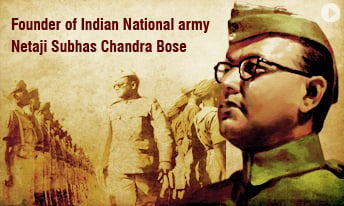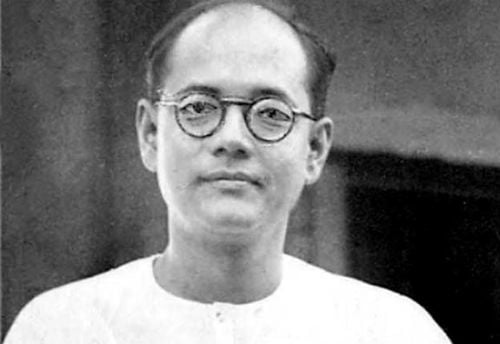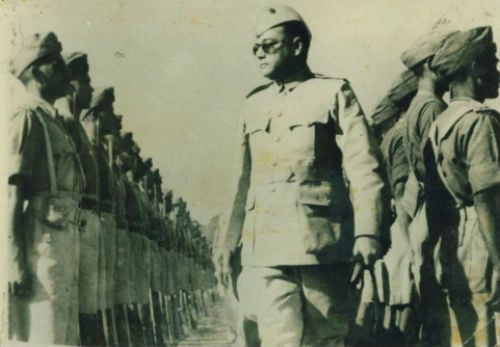Kattabomman History
Early life
Veerapandiya Kattabomman was born to Jagaveera Kattabomman
and Arumugattammal on January 3, 1760. He had two younger brothers Dalavai
Kumarasami and Duraisingam. Veerapandiyan was fondly called ‘Karuthaiah’ (the
black prince) and Dalavai Kumarasami was nicknamed ‘Sevathaiah’ (the white
prince) and since Duraisingam was a good orator he was nicknamed ‘Oomaithurai’
meaning the dumb (speech impaired) Prince. The name could be attributed as
VEERAM in Tamil means Bravery and Veerajakkadevi a Hindu God worshiped by his
family.
Ancestors
Azhagiya Veerapandiapuram (Ottapidaram of today) was ruled
by Jagaveera Pandiyan. He had a minister Bommu, also a brave warrior, who had
migrated from Andhra Pradesh to Tamil Nadu during the Vijaynagar times. He was
known as Gettibommulu in Telugu after the god Sastha Ayyanam Swamy to describe
his strength and fighting qualities which over a period of time, became
Kattabomman in Tamil. Kattabomman ascended the throne after Jagaveera Pandiyan,
who had no issue, as Adi Kattabomman, the first of the clan of Kattabomman.
Panchalankurichi
Legend has it that during a hunting trip into the forests of
Salikulam (close to Azhagiya Pandiyapuram) one of the Kattabommans was amazed
to see a hare chasing seven hounds. Believing that the land possessed the power
to instil courage in his people, he built his fort there and named it
Panchalankurichi.
On February 2, 1790, Veerapandiyan, 30, became the king of
Panchalankurichi as Veera Pandia Kattabomman supposedly the 47th ruler of the
region and the 5th ruler from the Kattabomman clan and a Palya-karrar (or
Polygar) of the Madurai Nayak kingdom.
Role of Palayakkarars
Following its collapse in the mid-16th century, the Tamil
governors of the Vijayanagara Empire broke away from the empire and established
independent kingdoms. The old Pandiya country came to be governed by Naicker
rulers in Madurai, who in turn divided their territories into 72 Palayams.
These 72 Palayams were franchised to Palayakarrars (Tamil word) or Polygars or
Poligars (a British Term), who had to administer their territories, collect
taxes, run the local judiciary, and maintain a battalion of troops on behalf of
the Naicker rulers of Madurai. Their function was a mixture of military
governance and civil administration.
The regional/local chieftains and rulers who were earlier
subordinates to the Madurai Kings became Polygars (or Palaya-karrar).
Dispute origins
The Nayak rule in Madurai which controlled the entire West
Tamil Nadu after two centuries came to an abrupt end in 1736 when Chanda Sahib
of Arcot seized the Madurai throne from the last queen of Madurai in an act of
treason. Chanda Sahib was later killed after the Carnatic Wars and the
territory came under the Nawab of Arcot. The Palaya-karrars of the old Madurai
country refused to recognize the new Muslim rulers driving the Nawab of Arcot
to bankruptcy, who also indulged in lavishes like building palaces before
sustaining his authority in the region.
Finally the Nawab resorted to borrowing huge sums from the
British East India Company, erupting as a scandal in the British Parliament.
The Nawab of Arcot finally gave the British the right to collect taxes and
levies from the southern region in lieu of the money he had borrowed. The East
India Company took advantage of the situation and plundered all the wealth of
the people in the name of tax collection. They even leased the country in
1750’s to a savage warrior Muhammed Yusuf Khan (alias Marutha Nayagam), who
defeated and killed many of the Polygars and later got himself killed by the
Arcot - British forces.
Many of the Polygars submitted, with the exception of
Katta-bomman and a few others who formed an alliance with the Maruthu Brothers
of Sivagangai.
Major Events
Kattabomman refused to pay his dues and for a long time
refused to meet Jackson Durai the Collector of the East India Company. Finally,
he met Jackson at Ramalinga Vilasam, the palace of Sethupathi of
Ramanathapuram. The meeting turned violent and ended in a skirmish in which the
Deputy Commandant of the Company’s forces, Clarke was slain. Kattabomman and
his men fought their way to freedom and safety, but Thanapathi Pillai,
Kattabomman’s secretary was taken prisoner.
The Commission of Enquiry that went into the incident fixed
the blame on Jackson and relieved him of his post, thinking the Company’s plan
to take over the entire country gradually could be marred by Jackson’s fight
with Veerapandiya Kattabomman.
The new Collector of Tirunelveli wrote to Kattabomman
calling him for a meeting on 16 March 1799. Kattabomman wrote back citing the
extreme drought conditions for the delay in the payment of dues and also
demanded that all that was robbed off him at Ramanathapuram be restored to him.
The Collector wanted the ruling house of Sethupathis to prevent Kattabomman from
aligning himself with the enemies of the Company and decided to attack
Kattabomman.
The British also instigated his long time feuding neighbor
Ettayapuram Poligar to make provocative wars over Kattabomman on their long
pending territorial disputes.
War against English
Kattabomman refused to meet the Collector and a fight broke
out. Under Major Bannerman, the army stood at all the four entrances of
Panchalankurichi’s fort. At the southern end, Lieutenant Collins was on the
attack. When the fort’s southern doors opened, Kattabomman and his forces
audaciously attacked the corps stationed at the back of his fort, and slew
their commander Lt. Collins.
The British after suffering heavy losses, decided to wait
for reinforcements and heavy artillery from Palayamkottai. Sensing that his
fort could not survive a barrage from heavy cannons, Kattabomman left the fort
that night.
A price was set on Kattabomman’s head. Thanapathi Pillai and
16 others were taken prisoners. Thanapathi Pillai was executed and his head
perched on a bamboo pole was displayed at Panchalankurichi to demoralise the
fighters. Soundra Pandian Nayak, another rebel leader, was brutally done to
death by having his head dashed against a village wall.
Capture and Sentence
Veerapandiya Kattabomman hid in so many places including
Thirumayam, Virachilai and finally stayed at Kolarpatti at Rajagopala Naicker’s
house where the forces surrounded the house. Kattabomman and his aides fled
from there and took refuge in the Thirukalambur forests close to Pudukkottai.
Bannerman ordered the Raja of Pudukkottai to arrest Kattabomman. Accordingly,
Kattabomman was captured and on October 16, 1799 the case was taken up (nearly
three weeks after his arrest near Pudukkottai).
After a summary trial, Kattabomman was hanged
unceremoniously on a Tamarind tree in Kayathar (near Thirunelveli).
Veeran Sundaralingam was a general of the Poligar
Veerapandiya Kattabomman in his fight against the British East India
Company.According to a majority of the accepted historical accounts, he was
killed in 1799, while fighting for Kattabomman during the First Polygar War.
Another view is that he was killed in the Second Polygar War (1800-1) while
assisting Kattabomman's younger brother Oomaithurai.
Some of the other noteworthy persons who were hanged along
with Kattabomman were Veeraghechayan Naicker, Dali Ethalappa Naicker and
Palayakarrars of Kaadalkudi, Nagalapuram Puthur, Vripachy, Sivagangai, to death
by hanging on charges of treason.
Aftermath
The Fort of Panchalankurichi was razed to the ground and all
of Kattabomman’s wealth was looted by the English soldiers. Few years later,
after the second Polygar war, the site of the captured fort was ploughed up and
sowed with castor oil and salt so that it should never again be inhabited by
the orders of the colonial government.
Legend and folklore
In subsequent years, a good deal of legend and folklore
developed around Kattabomman and the Marudu Brothers. Kayatharu, where
Kattabomman was executed has remained a place of political pilgrimage.
In his Tinnevelly Gazetteer of 1917, H. R. Pate notes the
presence, in Kayatharu, of "a great pile of stones of all sizes, which
represents the accumulated offerings by wayfarers of the past hundred years.
Folk songs recalling the heroism of the Poligar leaders remain alive in Tamil
Nadu to this day..."
The popular Tamil slang for a traitor or committing treason
is Ettapa or Ettapan, courtesy the Ettayapuram Polygar whom the British later
conferred the title of Raja. But it is disputed that Ettapan committed treason
Kattabomman was arrested by King of Pudukottai. The Campa Cola ground in
Chennai belongs/belonged to Ettappan family. Lately there is cry that unfair
portrayal of Ettappan in the film Kattabomman in which actor Sivaji Ganesan
gave a great performance, is the main cause for this. It seems that
Ma.Po.Si(Ma.Po.Sivanyanam) who wrote the dialogues for the film had some
misunderstanding with the Ettappan family.
Honor and Monuments
Kattabomman became thus the pivot of the emerging feeling of
Tamil nationhood. His story is celebrated in many legends and epic poetry in
Tamil. Kattabomman is today recognised by the government as one of the earliest
independence fighters opposing the British and has been hailed as the
inspiration behind the first battle of independence of 1857, which the British
called the Sepoy Mutiny.
• In 1974, the Government of Tamil Nadu constructed a new
Memorial fort. The Memorial Hall has beautiful paintings on the walls depicting
the heroic deeds of the saga which gives a good idea about the history of the
period. A cemetery of British soldiers are also seen near the fort.
• The remnants of the old fort are protected by the Archaeological
Survey of India.
• At Kayathar, near Tirunelveli on the present day NH7, the
place where he was hanged, there is another memorial for Kattabomman.
• To commemorate the bicentenary on 16 October 1999 of
Kattabomman’s hanging, the Government of India brought out a postal stamp in
his honour.
• India's premier communication nerve centre of the Indian
Navy, at Vijayanarayanam, about 40 km from here, is named as INS Kattabomman
[1].
• Till recently (1999) the state transport buses of
Tirunelveli District was named Kattabomman Transport Corporation.
• Veerapandia Kattabomman Panpattu Kazhagam (Veerapandia
Kattabomman Cultural association) is an organisation named in his honour.
• The district administration celebrates `Veerapandia
Kattabomman festival' at Panchalankurichi on his anniversaries.
From Hindu Newspaper The district administration celebrates
`Veerapandia Kattabomman festival' at Panchalankurichi
Later, he unveiled a huge portrait of Kattabomman at the
function, which was held near the Kattabomman memorial fort constructed by the
Government of Tamil Nadu in 1974.
Special pujas were conducted at Sri Devi Jakkammal temple,
hereditary goddess of Kattabomman, located near the fort.
Members of Veerapandia Kattabomman Panpattu Kazhagam brought
torches in as relay to the Kattabomman fort from places like Tiruchendur,
Pudur, Soorangudi and Kulathur, to mark the occasion.
Hundreds of people thronged the Kattabomman fort, which was
thrown open to the public on Friday, to get a glimpse of the beautiful
paintings on the walls of memorial hall inside it, which depicted the heroic
deeds of the saga.
The visitors were also told by the officials how the Britons
sentenced Kattabomman along with Kaadalkudi Zamin, Nagalapuram Puthur Zamin,
Vripachy Zamin, Sivagangai Zamin, Veeraghechayan naicker Zamin and Dali
Ethalappa Naicker Zamin, to death by hanging on charges of treason.
Heirs of Kattabomman attended the function.








